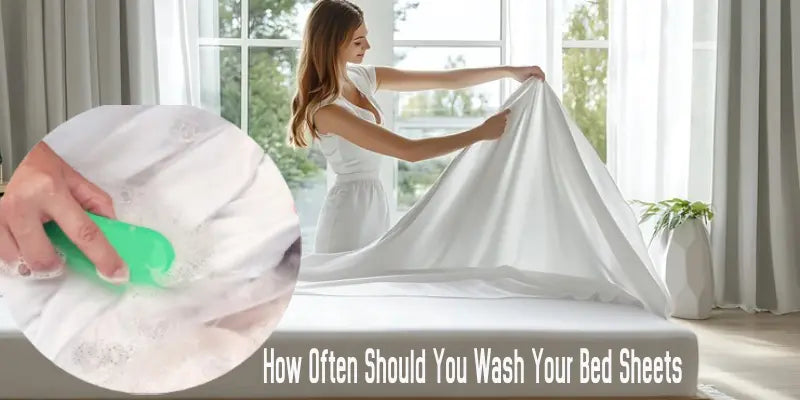
Sleep Apnea Symptoms in Women
In a society obsessed with looks and appearances, it is easy for women to feel self-conscious about any physical imperfections. One such condition that can cause women to feel insecure and apprehensive is sleep apnea, which can create unwanted snoring or gasp-like sounds during sleep. If you are one of the many women who have been diagnosed with sleep apnea, you may be wondering how to recognize the condition, as well as what your next steps should be. Allow this blog article to help guide you through these tasks!
What is Sleep Apnea?
Sleep apnea is a condition in which people periodically stop breathing during sleep. This can cause fatigue and other symptoms, and it’s common in people of all ages. There are two main types of sleep apnea: obstructive and central. Obstructive sleep apnea is when the airway becomes blocked repeatedly during sleep, causing pauses in breathing. Central sleep apnea is when the brain doesn’t send signals to the muscles that help breathe properly, leading to repeated pauses in breathing.
The most common symptom of sleep apnea is excessive daytime tiredness. Other symptoms can include:
- Excessive snoring or morning headaches
- Irritability or mood swings
- A feeling of being lightheaded or dizzy when getting up from bed
- Difficulty concentrating or making decisions
If you notice any of these symptoms, it’s important to see a doctor for an evaluation. If you have obstructive sleep apnea, your doctor may recommend using a device called a CPAP machine to help you breathe better at night. If you have central sleep apnea, your doctor may suggest using a nasal CPAP device or surgery to help open your airway and improve breathing.
Theories as to why women are more likely to develop sleep apnea
There are a number of theories as to why women are more likely to develop sleep apnea. One theory is that the female sex hormones, estrogen and progesterone, play a role in causing apnea. These hormones increase the risk of snoring and obstructive sleep apnea. Another theory is that women have a higher incidence of narcolepsy, which can lead to sleep apnea. Narcolepsy is a disorder characterized by daytime somnolence and episodes of rapid eye movement (REM) sleep. People with narcolepsy often have difficulty staying asleep and they often experience brief awakenings during the night. This can cause them to stop breathing during REM sleep, which can lead to apnea.
The Different Types of Sleep Apnea
There are many types of sleep apnea. The most common type is obstructive sleep apnea (OSA), in which a person's airway becomes blocked multiple times during the night. This can cause fatigue and problems with concentration and memory. Other types of apnea include central apnea, mixed apnea, and periodic limb movement disorder. Here are some tips for diagnosing and treating sleep apnea:
To diagnose sleep apnea, your doctor will ask you about your symptoms and perform a physical exam. If you have OSA, your doctor may also use a breathing test to determine if you have apnea episodes.
If you have OSA, treatment usually involves using a CPAP machine to help keep your airway open at night. CPAP machines require that you wear a mask that covers your nose and mouth to keep airflow consistent throughout the night. Many people find that CPAP therapy works well for them, but it isn't always necessary or recommended. For those who do not respond well to CPAP therapy, surgery may be an option.
If you have central apnea, treatment may involve using a continuous positive airway pressure (CPAP) machine or surgery to fix the problem in the brain that causes the cessation of breathing during sleep. Central apneas are less common than OSA, but they can be just as serious because they can prevent people from getting enough oxygen during sleep pneumonia is a serious complication caused by lack of oxygen during sleep.
What are the symptoms of Sleep Apnea in Women?
There are a few key symptoms of sleep apnea in women that you should be aware of if you think you may have the condition. These include: difficulty breathing during sleep, snoring or noisy breathing during sleep, interrupted sleep, and daytime fatigue. If you experience any of these symptoms, it is important to seek out medical attention to rule out sleep apnea as the cause.
Sleep apnea is a serious condition that can damage your health over time. It occurs when your airway becomes blocked frequently while you're sleeping, preventing oxygen from flowing into your brain and lungs. This can lead to fatigue and other problems during the day, as well as an increased risk of heart disease and stroke.
If you experience any of the following symptoms and think they might be due to sleep apnea, it's important to talk to a doctor about the possibility: difficulty breathing during sleep, loud snoring or noisy breathing during sleep, feelings of suffocation when you try to fall asleep, trouble staying asleep through the night, frequent headaches during the day, morning drowsiness or fatigue and memory issues.
How to Recognize Sleep Apnea Symptoms in Women?
If you're a woman, you're likely to experience some sleep apnea symptoms in woman. Sleep apnea is a disorder in which breathing is impaired during sleep. It's common in men, but women are more likely to have it.
Women commonly experience snoring and pauses in breathing during sleep. They may also feel tired even after getting enough rest. Women with sleep apnea often feel like they have to fight to stay awake during the day.
There are several things you can do to identify if you have sleep apnea. If you're having trouble sleeping or regularly experience one or more of the following symptoms, talk to your doctor:
- difficulty falling asleep
- waking up frequently during the night, especially at night
- loud snoring or periodic episodes of gasping for air
- feeling rested after only a few hours of sleep
- feeling fatigued throughout the day
Causes of Sleep Apnea
There are many different causes of sleep apnea, but the most common ones include obesity, daytime allergies, and dental problems. Other causes can include: snoring, enlarged tonsils or adenoids, smoking, GERD (gastroesophageal reflux disease), and stress.
If you're experiencing sleep apnea, you may be wondering what can be done to cure it. There is no one-size-fits-all answer to this question; each person's situation is unique. However, some general tips that may help include losing weight if you're overweight or obese, avoiding cigarette smoking and other respiratory irritants, and managing your stress levels. If these measures don't work for you, talk to your doctor about options for treating your sleep apnea.
How to Cure Sleep Apnea?
There are many possible causes of sleep apnea, but most people have the condition because their airway becomes blocked during sleep. Sleep apnea is a serious problem that can cause problems with daytime focus, quality of life, and even safety. Here are some tips on how to cure sleep apnea.
If you think you may have sleep apnea, talk to your doctor. Your doctor can do a sleep study to determine if you have the condition and whether it's causing any other problems.
To treat sleep apnea, your doctor may recommend CPAP (continuous positive airway pressure) therapy or surgery. CPAP involves using a machine to keep your airway open during sleep. Surgery is usually recommended only if CPAP isn't effective and there is a risk of death from obstructive sleep apnea.
If you're treating your own sleep apnea, here are some tips:
- Use a humidifier in your bedroom at night to increase moisture levels in the air. This will help loosen mucus and improve airflow through the nose during sleep.
- Make sure you get enough exercise during the day — exercise helps to reduce congestion and improve breathing at night. And don't forget about stretching! Stretching before bed can help relax the muscles in your chest and throat and improve airflow through your nose while you're sleeping."
Benefits of Using Pillows for Sleep Apnea
When you are sleeping, your body should be in a stable position. This is especially important for people with apnea, who are at an increased risk for snoring and other sleep problems. Pillows can help you keep your head and neck in a position that is comfortable and prevents apnea from happening.
Pillows can also increase the comfort level of your bed. If you have severe apnea, using a pillow may make it easier to fall asleep and stay asleep. Pillows also make it possible to change the position of your head and neck while you are sleeping, which can improve airflow through your nose or mouth.
Finally, pillows can be used as part of treatment for apnea by helping to keep your head elevated during sleep.
How to Use a Pillow for Sleep Apnea?
When it comes to sleep apnea, using a wedge pillow can be one of the most important pieces of equipment you have. A pillow can help to keep your head and neck in a neutral position while you sleep, which can reduce the severity of your apnea episodes.
There are a few different types of pillows that can be used for sleep apnea. A cervical pillow is designed to support your head and neck in a neutral position, while an adult-sized pillow is usually big enough to provide good support for your entire body. It's important to find the right kind of pillow for you so that you get the best results from it.
To use a pillow for sleep apnea, first make sure that it's the correct & big size pillow for your body. Cut out a piece of newspaper or thin fabric to make a template of your head and neck, and then take the measurement to buy the right type of pillow. Place the pillow on top of this template so that it fits snugly, and then adjust it as needed until you get a comfortable fit. Make sure that there's no pressure on your eyes or ears, and try not to move around too much during bedtime so that you can get the most restful sleep possible.








